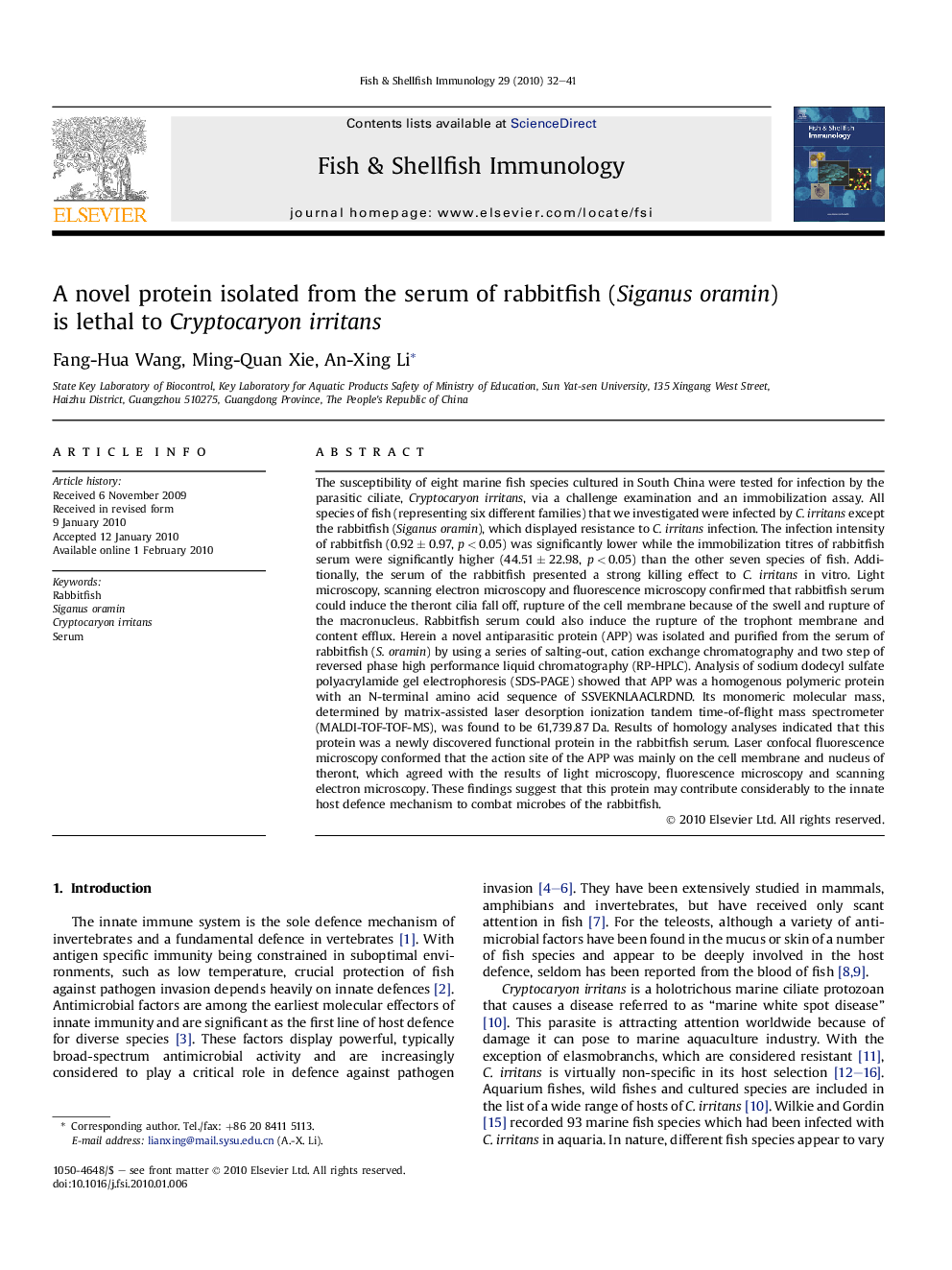| Article ID | Journal | Published Year | Pages | File Type |
|---|---|---|---|---|
| 2432793 | Fish & Shellfish Immunology | 2010 | 10 Pages |
The susceptibility of eight marine fish species cultured in South China were tested for infection by the parasitic ciliate, Cryptocaryon irritans, via a challenge examination and an immobilization assay. All species of fish (representing six different families) that we investigated were infected by C. irritans except the rabbitfish (Siganus oramin), which displayed resistance to C. irritans infection. The infection intensity of rabbitfish (0.92 ± 0.97, p < 0.05) was significantly lower while the immobilization titres of rabbitfish serum were significantly higher (44.51 ± 22.98, p < 0.05) than the other seven species of fish. Additionally, the serum of the rabbitfish presented a strong killing effect to C. irritans in vitro. Light microscopy, scanning electron microscopy and fluorescence microscopy confirmed that rabbitfish serum could induce the theront cilia fall off, rupture of the cell membrane because of the swell and rupture of the macronucleus. Rabbitfish serum could also induce the rupture of the trophont membrane and content efflux. Herein a novel antiparasitic protein (APP) was isolated and purified from the serum of rabbitfish (S. oramin) by using a series of salting-out, cation exchange chromatography and two step of reversed phase high performance liquid chromatography (RP-HPLC). Analysis of sodium dodecyl sulfate polyacrylamide gel electrophoresis (SDS-PAGE) showed that APP was a homogenous polymeric protein with an N-terminal amino acid sequence of SSVEKNLAACLRDND. Its monomeric molecular mass, determined by matrix-assisted laser desorption ionization tandem time-of-flight mass spectrometer (MALDI-TOF-TOF-MS), was found to be 61,739.87 Da. Results of homology analyses indicated that this protein was a newly discovered functional protein in the rabbitfish serum. Laser confocal fluorescence microscopy conformed that the action site of the APP was mainly on the cell membrane and nucleus of theront, which agreed with the results of light microscopy, fluorescence microscopy and scanning electron microscopy. These findings suggest that this protein may contribute considerably to the innate host defence mechanism to combat microbes of the rabbitfish.
